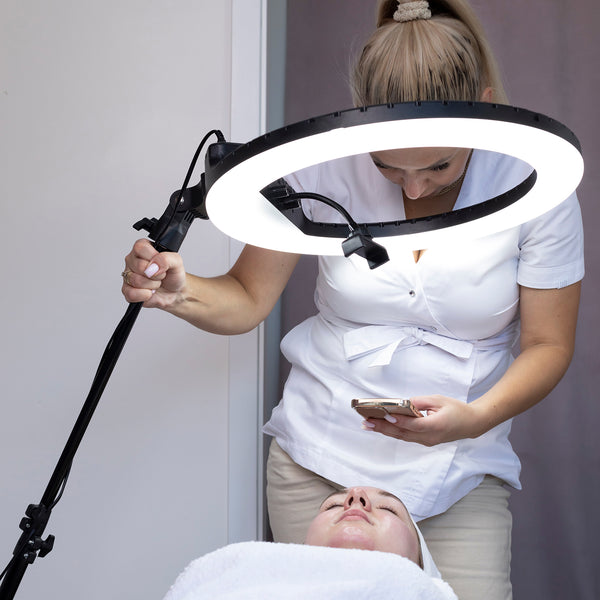Branding 101 for your Esthetic Business

Branding is crucial when it comes to building a successful esthetic business. Your brand represents who you are, what you stand for, and the expectations your clients can have when visiting your spa or solo esthetic space. A well-thought-through brand can help differentiate you from competitors, attract new clients and retain old ones. It will also elevate your professional image and make marketing material cohesive across all channels. In this article, I will examine the importance of branding for estheticians, list the critical elements of a successful branding strategy, and offer advice for creating a brand that resonates with your target clientele.
Several major elements of branding contribute to the overall success of a spa or a solo esthetician’s brand. A strong brand is built on a foundation of consistent, intentional efforts across all the elements below.
Brand identity: This includes the visual components of your brand, such as your logo, color scheme, typography, and iconography. It should reflect the personality and values of your business and be consistent across all marketing materials and channels.
Since we are skincare professionals and not branding, marketing, or design experts, I strongly recommend investing in a specialist to procure a logo and brand kit for your business from the very start. A knowledgeable designer will take the time to learn about your philosophy, values, and target audience before putting his or her vision into a brand kit. Usually, up to three reworks are allowed, and if, after three tries, you are still not on the same page with the designer, I suggest trying another one.
Brand positioning: This refers to the place your esthetic business occupies in the market and how it differentiates from competitors. Your brand positioning should be based on thoroughly understanding your target customer base and their needs.
Is your spa an Eco-Spa, a Med-Spa, or a mobile spa? Or, perhaps it’s a hot-spring spa? All of these types of businesses are spas but are most likely different in their menu offerings, products used and retailed, and of course, amenities. The marketing should highlight the benefits of the business and look the most appealing to the target customer base.
Brand messaging: This is how your brand communicates with your audience through your tagline, brand voice, and tone. It should align with your brand identity and convey the benefits and unique selling points of your business.
Is your communication style casual, cheeky, or professional? Does your Instagram feed have memes and fun reels about the importance of applying sunscreen? This is all a part of your brand voice and messaging style.
Brand experience: This is the overall experience that customers have with your brand, including the quality of your products and services, customer service, and the physical environment of your spa.
Is there a signature aroma in your treatment room? Is tea offered in the lobby? By providing a consistent and memorable experience, the spa can build a loyal customer base and differentiate itself from competitors that may offer a less personalized or luxurious experience.
Brand equity: This is the value your brand adds to your business, including customer loyalty, trust, and recognition. Building brand equity requires consistent efforts over time.
A strong brand can help a spa stand out from its competitors and increase its visibility in the market. Positive reviews on Yelp and Google are some of the best free marketing assets a business possesses. Word-of-mouth recommendations also contribute to brand value. An esthetician with a strong brand can charge premium prices for his or her services because customers perceive the experience to be of high quality and value. Customers are willing to pay more for a treatment experience that they perceive as luxurious, relaxing, and high-end.










